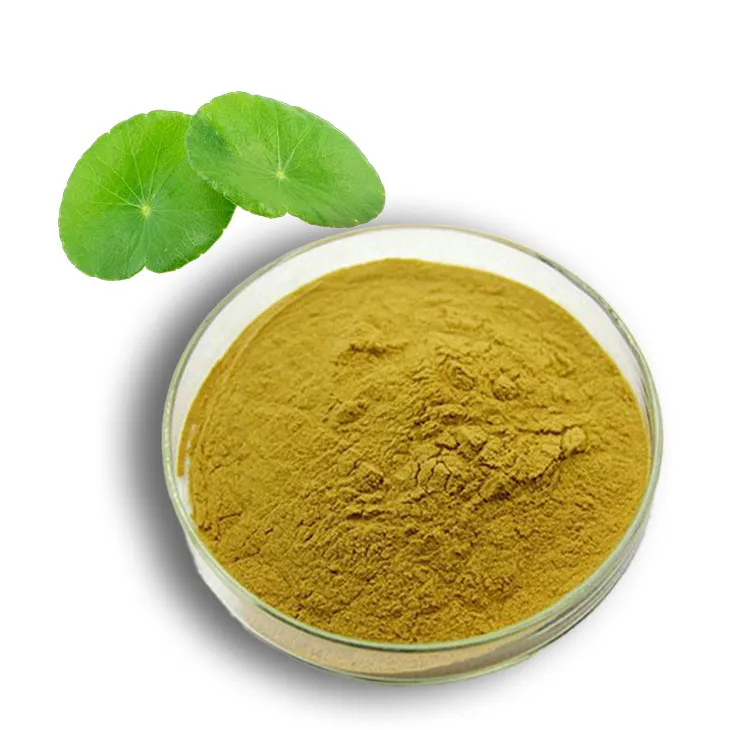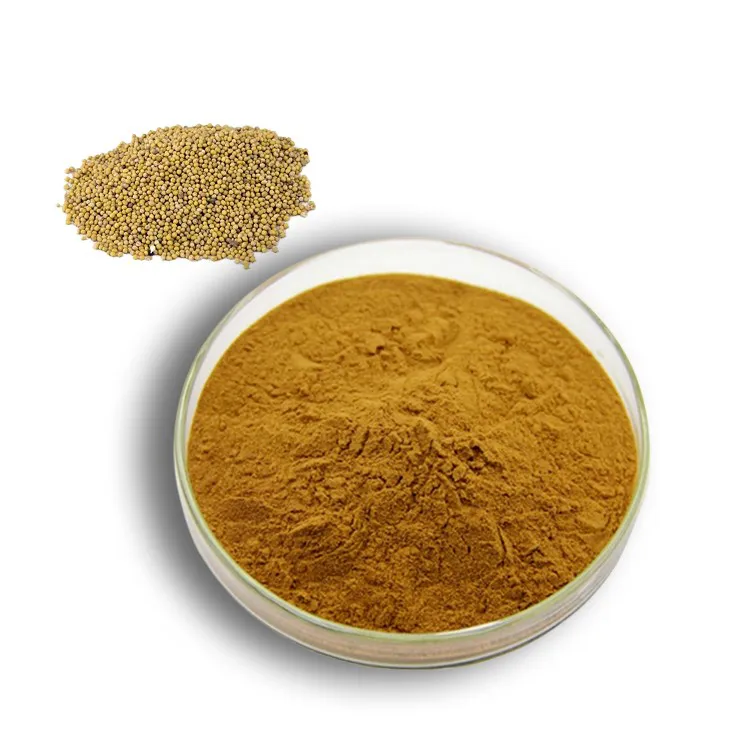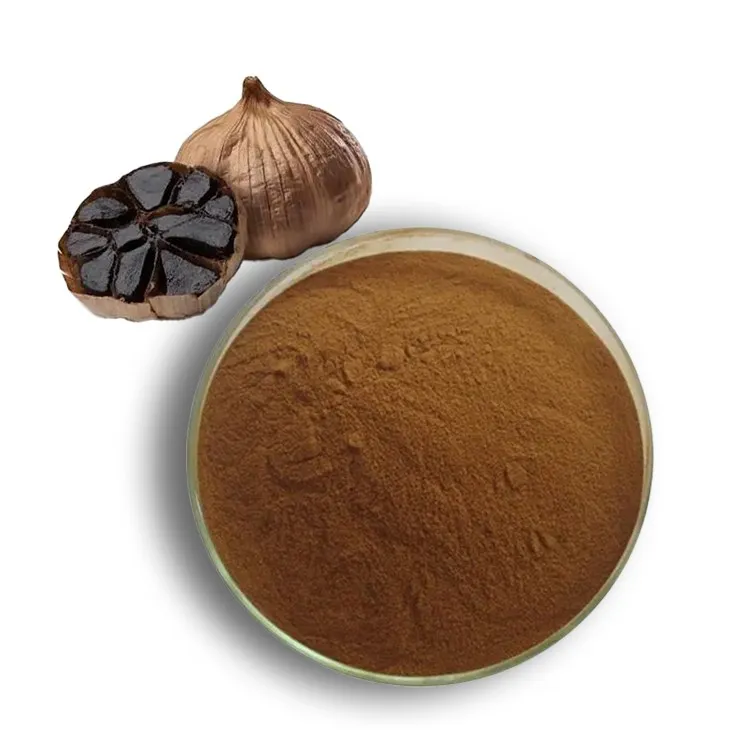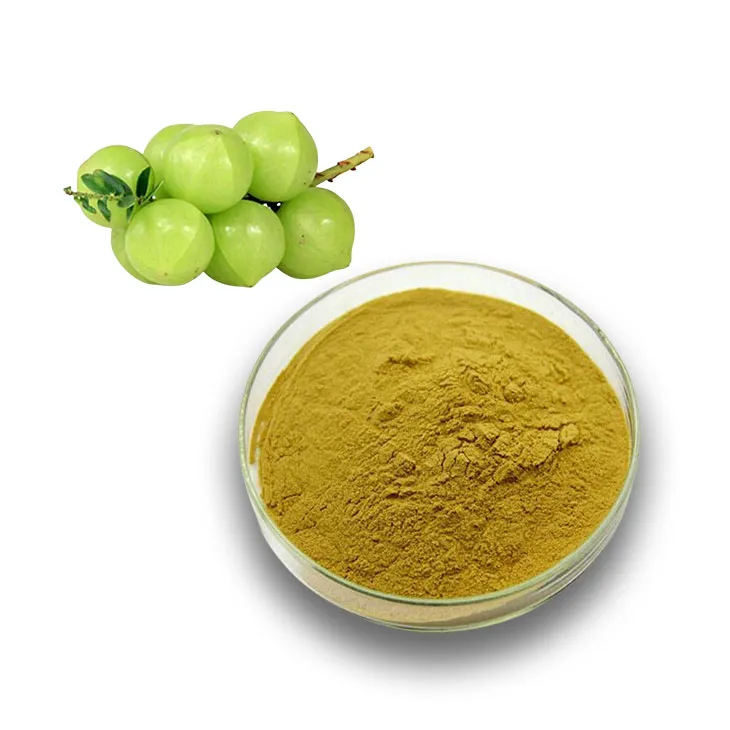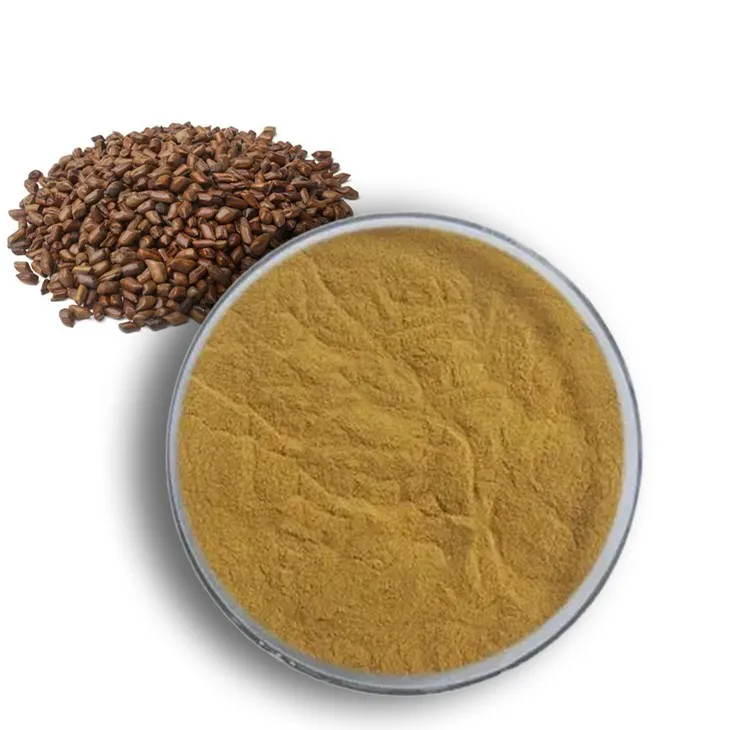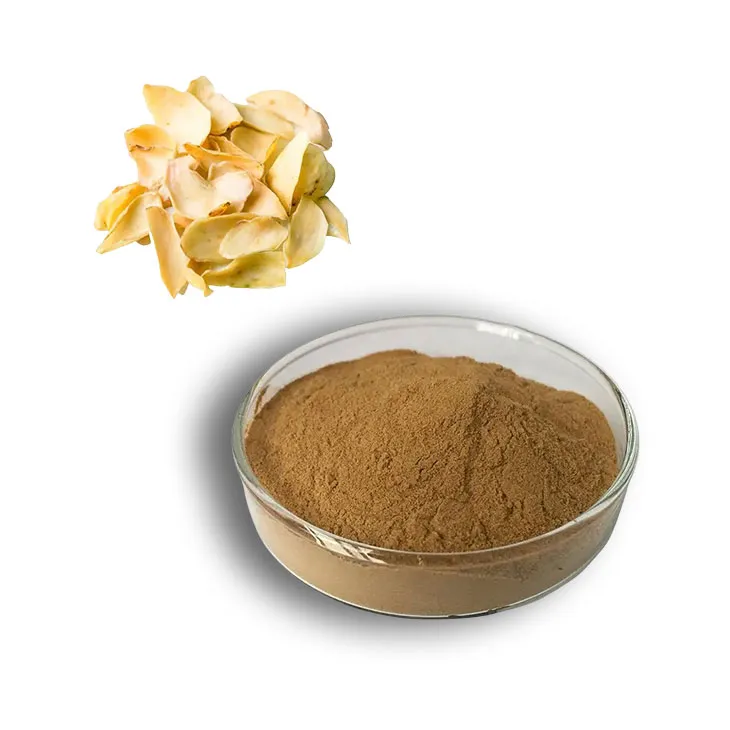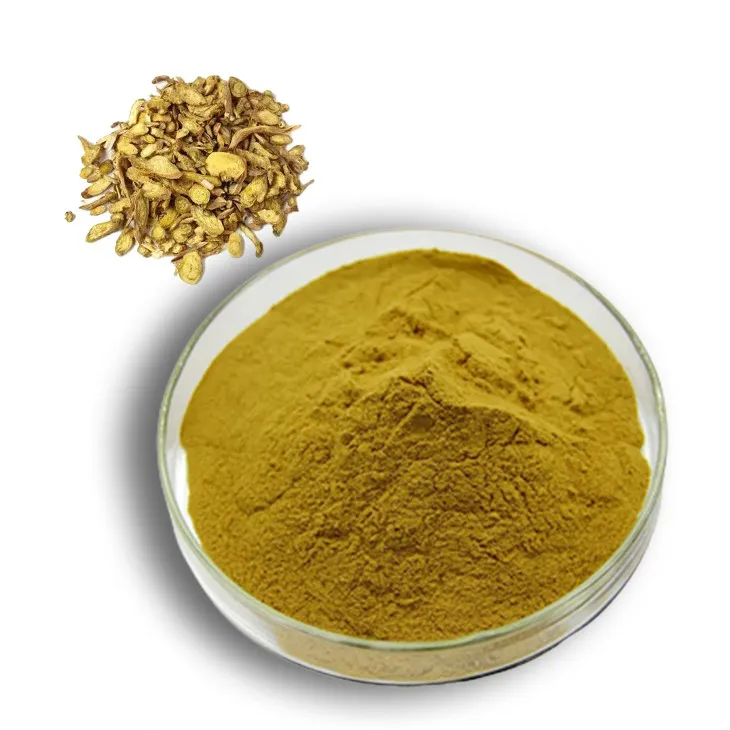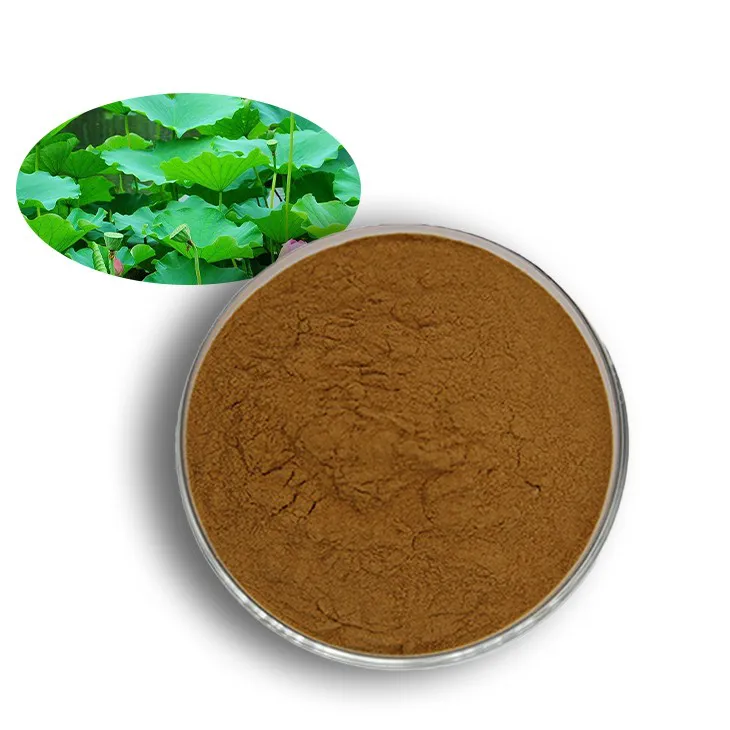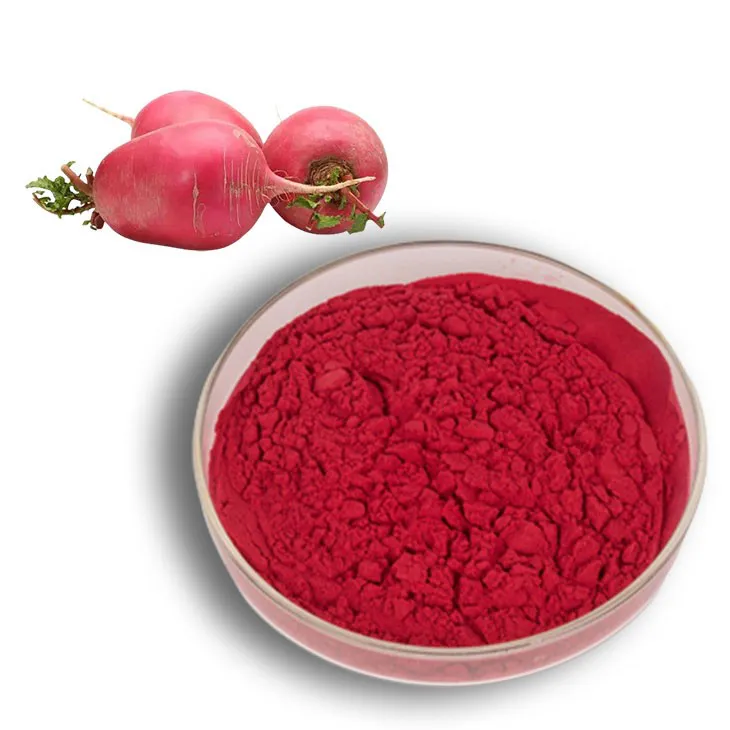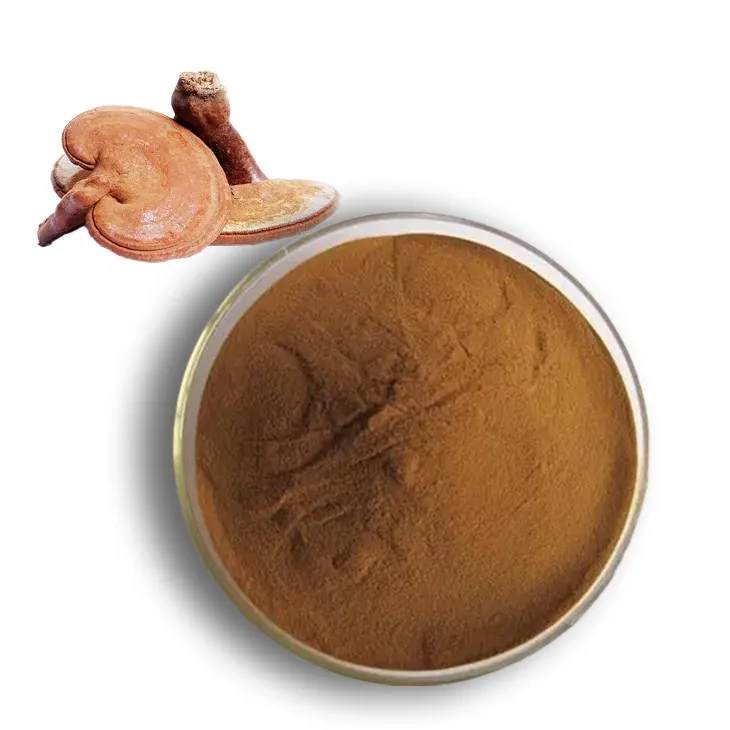- 0086-571-85302990
- sales@greenskybio.com
anti-inflammatory activity of plant extract
2023-09-27
1. Importance of Plant Extracts in Medicine
1. Importance of Plant Extracts in Medicine
Plant extracts have been a cornerstone of medicinal practices for thousands of years, with a rich history of use across various cultures and civilizations. The importance of plant extracts in medicine is multifaceted, encompassing aspects such as their diverse chemical composition, accessibility, cost-effectiveness, and the potential for novel drug discovery.
Chemical Diversity
One of the primary reasons plant extracts are so valuable in medicine is the vast array of chemical compounds they contain. These compounds, which include alkaloids, flavonoids, terpenes, and phenols, among others, can exhibit a wide range of biological activities, including anti-inflammatory, analgesic, antimicrobial, and antioxidant properties. This chemical diversity is a rich source for the development of new pharmaceuticals.
Accessibility and Sustainability
Plants are often more accessible than synthetic drugs, especially in rural and remote areas where healthcare facilities may be limited. Many medicinal plants grow abundantly in the wild or can be cultivated with relative ease, making them a sustainable and cost-effective option for healthcare.
Traditional Knowledge
Indigenous and traditional knowledge systems have utilized plant extracts for centuries to treat various ailments, including inflammation. This accumulated wisdom provides a wealth of information that modern medicine can draw upon to understand the therapeutic potential of these natural resources.
Drug Discovery
Plant extracts serve as a treasure trove for drug discovery. Many modern medicines have been derived or inspired by compounds originally found in plants. For instance, the pain reliever aspirin was originally derived from the bark of the willow tree.
Complementary and Alternative Medicine
In an era where there is a growing interest in complementary and alternative medicine, plant extracts offer a natural approach to healthcare. They are often used in conjunction with conventional treatments to enhance their effects or to manage side effects.
Regulatory and Ethical Considerations
The use of plant extracts in medicine also raises important regulatory and ethical issues, such as ensuring the safety, efficacy, and quality control of these products. Additionally, there is a need to respect and protect the rights of indigenous communities who have traditionally used these plants.
In conclusion, the importance of plant extracts in medicine cannot be overstated. They offer a bridge between traditional healing practices and modern pharmaceuticals, providing a wealth of therapeutic potential that continues to be explored and harnessed for the benefit of human health. As we delve deeper into the anti-inflammatory activity of plant extracts, we uncover yet another dimension of their invaluable role in medicine.
2. Historical Use of Plant Extracts for Inflammation
2. Historical Use of Plant Extracts for Inflammation
Inflammation has been a part of the human condition since time immemorial, and so has the quest for remedies to alleviate its symptoms. The historical use of plant extracts for inflammation is deeply rooted in various cultures and traditional medicinal practices around the world. Long before the advent of modern medicine, people relied on the natural world for their healing properties, and many of these practices continue to inform contemporary research and medicine.
Ancient Civilizations and Plant Extracts
Ancient civilizations such as the Egyptians, Greeks, and Romans documented the use of various plants for their anti-inflammatory properties. For instance, the Egyptians were known to use extracts from the willow tree, which contains salicylic acid, a compound that is the precursor to modern-day aspirin. Similarly, the Greeks used herbs like mint and thyme, which have anti-inflammatory properties, to treat a variety of ailments.
Traditional Chinese Medicine
In Traditional Chinese Medicine (TCM), a holistic approach to health and wellness has been practiced for thousands of years. Many herbs used in TCM are known for their anti-inflammatory effects. Turmeric, for example, which contains the active compound Curcumin, has been used for centuries to reduce inflammation and is now a widely studied compound for its potential health benefits.
Ayurvedic Medicine
Ayurveda, the traditional medicine system of India, also has a rich history of using plant extracts to treat inflammation. Herbs like ginger, which contains gingerols and shogaols known for their anti-inflammatory properties, and holy basil (Tulsi), have been integral to Ayurvedic treatments for inflammatory conditions.
Indigenous Medicine
Indigenous cultures worldwide have their own traditional medicine systems, which often include the use of local plants with anti-inflammatory properties. For example, in South America, the bark of the Cinchona tree has been used for centuries to treat fevers and inflammation, while in North America, Native American tribes have used the bark of the white willow for similar purposes.
Evolution of Plant Extract Use
Over time, the use of plant extracts for inflammation has evolved from empirical observations to a more systematic understanding of their active components and mechanisms of action. With the advancement of scientific methods, researchers have been able to isolate and study the bioactive compounds in plants, leading to a better understanding of their therapeutic potential.
Modern Integration
Today, many modern anti-inflammatory drugs are derived or inspired by plant extracts. The integration of historical knowledge with modern scientific research has led to the development of new drugs and a renewed interest in the potential of plant-based medicine.
In conclusion, the historical use of plant extracts for inflammation is a testament to the enduring wisdom of traditional medicine. As we continue to explore and understand the complex interactions between plants and human health, these ancient remedies may hold the key to developing new treatments for a wide range of inflammatory conditions.
3. Types of Inflammation and Their Causes
3. Types of Inflammation and Their Causes
Inflammation is a complex biological response of the body's immune system to harmful stimuli, such as pathogens, damaged cells, or irritants. It is a protective mechanism that helps the body to heal and fight against infections. However, chronic inflammation can lead to various diseases and health issues. There are several types of inflammation, each with its own causes and characteristics.
Acute Inflammation:
Acute inflammation is the initial response to injury or infection and is typically characterized by redness, heat, swelling, pain, and loss of function. It is a rapid and short-lived process that usually resolves within hours to days. Common causes of acute inflammation include minor injuries, burns, infections, and allergic reactions.
Chronic Inflammation:
Chronic inflammation is a prolonged and persistent inflammatory response that can last for weeks, months, or even years. It is often associated with autoimmune diseases, chronic infections, and tissue damage. Chronic inflammation can lead to tissue remodeling and fibrosis, which may result in organ dysfunction. Causes of chronic inflammation include autoimmune disorders like rheumatoid arthritis and lupus, as well as conditions like atherosclerosis and inflammatory bowel disease.
Systemic Inflammation:
Systemic inflammation affects the entire body and is often associated with severe infections or conditions that trigger a widespread immune response. It can lead to systemic inflammatory response syndrome (SIRS), which can be life-threatening if not treated promptly. Causes of systemic inflammation include sepsis, severe trauma, and certain autoimmune diseases.
Local Inflammation:
Local inflammation is confined to a specific area of the body and is the body's response to injury or infection in that particular region. It is typically characterized by the classic signs of inflammation: heat, redness, swelling, pain, and sometimes loss of function. Causes of local inflammation include insect bites, small cuts, or localized infections.
Allergic Inflammation:
Allergic inflammation is a type of immune response that occurs when the body overreacts to a harmless substance, known as an allergen. This can result in symptoms such as itching, redness, and swelling. Common allergens include pollen, pet dander, certain foods, and medications.
Neuroinflammation:
Neuroinflammation involves the immune response within the central nervous system (CNS) and is associated with various neurological disorders. It can be triggered by infections, trauma, or neurodegenerative diseases and can contribute to conditions such as Alzheimer's disease, Parkinson's disease, and multiple sclerosis.
Understanding the different types of inflammation and their causes is crucial for developing effective treatment strategies. Plant extracts, with their diverse chemical compositions, have shown potential in modulating various aspects of the inflammatory process, offering a natural alternative or complement to conventional medications.
4. Mechanisms of Action of Plant Extracts on Inflammation
4. Mechanisms of Action of Plant Extracts on Inflammation
Inflammation is a complex biological response to harmful stimuli, such as pathogens, damaged cells, or irritants. It is a protective mechanism of the body's immune system and is characterized by redness, heat, swelling, pain, and sometimes loss of function. The anti-inflammatory activity of plant extracts can be attributed to various mechanisms of action, which are discussed below:
4.1 Inhibition of Cyclooxygenase (COX) and Lipoxygenase (LOX) Enzymes
One of the primary mechanisms by which plant extracts exert their anti-inflammatory effects is through the inhibition of cyclooxygenase (COX) and lipoxygenase (LOX) enzymes. These enzymes are responsible for the production of prostaglandins and leukotrienes, which are potent mediators of inflammation. Plant extracts containing compounds such as flavonoids, phenolic acids, and terpenes can inhibit the activity of these enzymes, thereby reducing inflammation.
4.2 Suppression of Nuclear Factor-kappa B (NF-κB) Pathway
The NF-κB pathway is a critical component of the inflammatory response. Activation of this pathway leads to the transcription of various pro-inflammatory genes. Plant extracts can suppress the NF-κB pathway by preventing the translocation of NF-κB to the nucleus, thus reducing the production of inflammatory cytokines and mediators.
4.3 Modulation of Adhesion Molecules
Inflammation involves the recruitment of immune cells to the site of injury or infection. Adhesion molecules play a crucial role in this process by facilitating the attachment of immune cells to the endothelium. Plant extracts can modulate the expression of these adhesion molecules, thereby inhibiting the migration of immune cells and reducing inflammation.
4.4 Antioxidant Activity
Oxidative stress is a significant contributor to the inflammatory process. Reactive oxygen species (ROS) can cause cellular damage and activate inflammatory pathways. Plant extracts rich in antioxidants, such as polyphenols and flavonoids, can neutralize ROS and reduce oxidative stress, thus exerting an anti-inflammatory effect.
4.5 Inhibition of Tumor Necrosis Factor-alpha (TNF-α) and Interleukins
TNF-α and various interleukins are pro-inflammatory cytokines that play a central role in the inflammatory response. Plant extracts can inhibit the production and activity of these cytokines, thereby reducing inflammation.
4.6 Activation of Anti-Inflammatory Pathways
Some plant extracts can activate anti-inflammatory pathways, such as the peroxisome proliferator-activated receptor (PPAR) pathway. Activation of these pathways can suppress the production of pro-inflammatory mediators and promote the resolution of inflammation.
4.7 Direct Interaction with Inflammatory Cells
Plant extracts can also exert anti-inflammatory effects by directly interacting with inflammatory cells, such as macrophages and neutrophils. This interaction can modulate the release of inflammatory mediators and alter the behavior of these cells.
In conclusion, the anti-inflammatory activity of plant extracts is multifaceted and involves a variety of mechanisms. Understanding these mechanisms is crucial for the development of effective therapeutic agents derived from plants. Further research is needed to elucidate the specific compounds and pathways involved in the anti-inflammatory effects of plant extracts, which will aid in the optimization of their therapeutic potential.
5. Commonly Studied Anti-Inflammatory Plant Extracts
5. Commonly Studied Anti-Inflammatory Plant Extracts
In the realm of natural medicine, numerous plant extracts have garnered attention for their potential anti-inflammatory properties. These plant extracts are rich in bioactive compounds that can modulate various aspects of the inflammatory response. Here, we delve into some of the most commonly studied anti-inflammatory plant extracts:
1. Curcumin (from Curcuma longa): Curcumin, the principal curcuminoid of the popular spice turmeric, is renowned for its potent anti-inflammatory effects. It is believed to inhibit the activity of various inflammatory cytokines and enzymes, such as cyclooxygenase-2 (COX-2) and 5-lipoxygenase (5-LOX).
2. Resveratrol (from Polygonum cuspidatum and Vitis vinifera): Resveratrol, found in grapes and other plants, exhibits anti-inflammatory properties by affecting the nuclear factor kappa B (NF-κB) signaling pathway, which is a key player in inflammation.
3. Gingerols (from Zingiber officinale): Ginger, a widely used spice, contains gingerols that have been shown to possess anti-inflammatory activity. They are known to inhibit the production of prostaglandins and leukotrienes, which are mediators of inflammation.
4. Eucalyptol (from Eucalyptus globulus): Eucalyptol, a monoterpenoid found in eucalyptus oil, has been studied for its ability to reduce inflammation by modulating the activity of inflammatory cells and molecules.
5. Green Tea Polyphenols (from Camellia sinensis): Rich in catechins, green tea polyphenols have been extensively studied for their anti-inflammatory effects. Epigallocatechin gallate (EGCG), in particular, is known to suppress the production of pro-inflammatory cytokines.
6. Willow Bark Extract (from Salix spp.): Containing salicin, which is converted to salicylic acid in the body, willow bark has been used as a natural analgesic and anti-inflammatory agent for centuries.
7. Boswellic Acids (from Boswellia serrata): Boswellic acids are pentacyclic triterpene acids that have shown to inhibit leukotriene synthesis and reduce inflammation in various conditions.
8. Propolis: Propolis, a resinous substance collected by bees, contains flavonoids and other compounds that exhibit anti-inflammatory activity through various mechanisms, including the inhibition of COX enzymes.
9. Andrographis Paniculata (from Andrographis paniculata): Known as "Kalmegha" in Ayurveda, this plant contains andrographolide, which has been shown to have potent anti-inflammatory effects.
10. Ginkgo Biloba Extract: Ginkgo biloba contains flavonoids and terpenoids that have been studied for their ability to reduce oxidative stress and inflammation.
11. St. John's Wort (from Hypericum perforatum): This plant is known for its hypericin and hyperforin content, which have been linked to anti-inflammatory properties.
12. Marshmallow Root (from Althaea officinalis): Rich in mucilage, marshmallow root has been traditionally used for its soothing and anti-inflammatory effects on the gastrointestinal tract.
13. Cinnamon (from Cinnamomum verum): Cinnamon contains cinnamaldehyde, which has been shown to have anti-inflammatory effects by inhibiting the production of pro-inflammatory cytokines.
14. Passionflower (from Passiflora incarnata): Passionflower contains flavonoids and other compounds that exhibit anti-inflammatory activity, particularly in the central nervous system.
15. Horsetail (from Equisetum arvense): Horsetail contains silica and other compounds that have been studied for their potential to reduce inflammation and promote healing.
These plant extracts are just a glimpse of the vast array of natural resources that have been, and continue to be, explored for their therapeutic potential in managing inflammation. As research progresses, more compounds and mechanisms of action will likely be discovered, expanding our understanding of how these natural remedies can be harnessed for health and wellness.
6. Extraction Methods and Techniques
6. Extraction Methods and Techniques
The efficacy of plant extracts in anti-inflammatory applications is highly dependent on the extraction methods and techniques used to isolate the bioactive compounds. Various methods have been developed and refined over time to ensure the preservation of these compounds while maximizing their extraction. Here, we discuss some of the most commonly used techniques in the field of phytochemistry.
6.1 Solvent Extraction
Solvent extraction is one of the most traditional methods for extracting bioactive compounds from plants. It involves soaking plant material in a solvent, such as water, ethanol, or methanol, which dissolves the compounds of interest. The solvent is then evaporated, leaving behind a concentrated extract. The choice of solvent depends on the polarity of the compounds being targeted.
6.2 Steam Distillation
Steam distillation is particularly useful for extracting volatile compounds, such as essential oils, which are often responsible for the anti-inflammatory properties of certain plants. In this method, steam is passed through the plant material, and the volatile compounds are carried along with the steam and then condensed and collected.
6.3 Cold Pressing
Cold pressing is a mechanical method used to extract oils from fruits or seeds without the application of heat. This method is preferred for heat-sensitive compounds to prevent degradation and loss of bioactivity.
6.4 Supercritical Fluid Extraction (SFE)
SFE employs supercritical fluids, typically carbon dioxide, which has properties between those of a liquid and a gas. The supercritical fluid can penetrate plant material efficiently, extracting a wide range of compounds with high selectivity and without the need for organic solvents.
6.5 Ultrasonic-Assisted Extraction (UAE)
Ultrasound waves can disrupt plant cell walls, facilitating the release of bioactive compounds into the extraction solvent. UAE is a rapid and efficient method that can reduce the amount of solvent used and the time required for extraction.
6.6 Microwave-Assisted Extraction (MAE)
MAE uses microwave energy to heat the extraction solvent, increasing the rate of extraction and improving the yield of bioactive compounds. This method is particularly effective for thermally stable compounds.
6.7 Enzymatic Extraction
Enzymatic extraction involves the use of enzymes to break down plant cell walls and release bioactive compounds. This method is gentle and can be tailored to target specific compounds, reducing the extraction of unwanted materials.
6.8 Membrane Technologies
Membrane technologies, such as ultrafiltration and reverse osmosis, can be used to separate and concentrate bioactive compounds from plant extracts. These methods are particularly useful for purifying extracts and removing unwanted compounds.
6.9 Green Extraction Techniques
With increasing environmental concerns, green extraction techniques are gaining popularity. These methods, such as pressurized hot water extraction and extraction using ionic liquids, aim to reduce the use of harmful solvents and energy consumption.
6.10 Optimization of Extraction Conditions
The optimization of extraction conditions, such as temperature, pressure, solvent concentration, and extraction time, is crucial for maximizing the yield and bioactivity of plant extracts. This often involves a combination of experimental design and statistical analysis.
6.11 Quality Control and Standardization
Once extracted, plant extracts must be standardized to ensure consistency and reproducibility. This involves the identification and quantification of bioactive markers and the establishment of quality control measures to maintain product integrity.
The choice of extraction method is influenced by factors such as the nature of the plant material, the target compounds, the scale of production, and environmental considerations. As research progresses, new and innovative extraction techniques continue to emerge, offering improved efficiency, selectivity, and sustainability in the extraction of anti-inflammatory plant extracts.
7. In Vitro and In Vivo Studies on Plant Extracts
7. In Vitro and In Vivo Studies on Plant Extracts
In vitro and in vivo studies are crucial in the evaluation of the anti-inflammatory activity of plant extracts. These studies provide a comprehensive understanding of the efficacy and mechanisms of action of these natural compounds on inflammation.
In Vitro Studies
In vitro studies involve the use of cell cultures or isolated tissues to investigate the effects of plant extracts on inflammation. These studies are performed under controlled laboratory conditions, allowing researchers to manipulate variables and observe the direct effects of the extracts on cells.
1. Cell Culture Models: Various cell lines, such as macrophages, fibroblasts, and endothelial cells, are used to study the anti-inflammatory effects of plant extracts. These cells play a crucial role in the inflammatory response and can be stimulated to produce inflammatory mediators.
2. Cytokine Release Assays: Plant extracts can be tested for their ability to modulate the release of pro-inflammatory cytokines, such as tumor necrosis factor-alpha (TNF-α), interleukin-1β (IL-1β), and interleukin-6 (IL-6), which are key players in the inflammatory process.
3. Enzyme Inhibition Assays: In vitro studies can also assess the ability of plant extracts to inhibit enzymes involved in inflammation, such as cyclooxygenase (COX) and lipoxygenase (LOX), which are responsible for the production of prostaglandins and leukotrienes.
4. Reactive Oxygen Species (ROS) Scavenging Assays: Plant extracts can be evaluated for their antioxidant properties by measuring their ability to scavenge ROS, which are known to contribute to inflammation and tissue damage.
In Vivo Studies
In vivo studies involve the use of animal models to investigate the anti-inflammatory effects of plant extracts in a living organism. These studies provide valuable insights into the pharmacokinetics, bioavailability, and overall efficacy of the extracts in a more complex biological system.
1. Acute Inflammation Models: Plant extracts can be tested in animal models of acute inflammation, such as the carrageenan-induced paw edema test or the xylene-induced ear edema test. These models help to evaluate the ability of the extracts to reduce inflammation in a short period.
2. Chronic Inflammation Models: Chronic inflammation models, such as the adjuvant-induced arthritis model or the dextran sulfate sodium (DSS)-induced colitis model, can be used to study the long-term effects of plant extracts on inflammation and tissue damage.
3. Systemic Inflammation Models: Plant extracts can be tested in animal models of systemic inflammation, such as the lipopolysaccharide (LPS)-induced endotoxemia model, to evaluate their ability to modulate the systemic inflammatory response.
4. Mechanism of Action Studies: In vivo studies can also help to elucidate the underlying mechanisms of action of plant extracts on inflammation. For example, researchers can investigate the effects of the extracts on immune cell infiltration, cytokine production, and the activation of signaling pathways involved in inflammation.
Conclusion
In vitro and in vivo studies are essential for the evaluation of the anti-inflammatory activity of plant extracts. These studies provide valuable information on the efficacy, mechanisms of action, and potential therapeutic applications of these natural compounds. However, it is important to note that the results obtained from in vitro and in vivo studies should be interpreted with caution, as they may not always translate to the same effects in humans. Further clinical trials and human studies are necessary to validate the findings and establish the safety and efficacy of plant extracts for the treatment of inflammatory conditions.
8. Clinical Trials and Human Studies
8. Clinical Trials and Human Studies
The translation of the anti-inflammatory properties of plant extracts from laboratory research to practical medical applications necessitates rigorous clinical trials and human studies. These studies are essential for establishing the safety, efficacy, and optimal dosages of plant-based treatments for inflammatory conditions.
8.1 The Role of Clinical Trials
Clinical trials are conducted in multiple phases to assess the safety and effectiveness of plant extracts in treating inflammation. Phase I trials involve a small group of healthy volunteers to evaluate the safety and determine a safe dosage range. Phase II trials involve a larger group of patients to assess the efficacy of the treatment and further evaluate its safety. Phase III trials are conducted on an even larger scale to confirm the effectiveness of the treatment and monitor side effects in a diverse population. Finally, Phase IV trials are post-marketing studies that gather long-term data on the drug's safety and efficacy.
8.2 Human Studies and Case Reports
Human studies provide direct evidence of the efficacy of plant extracts in treating inflammation in real-world scenarios. These studies can range from randomized controlled trials (RCTs) to observational studies and case reports. RCTs are considered the gold standard for evaluating the effectiveness of a treatment, as they minimize bias and confounding factors. Observational studies, such as cohort and case-control studies, can provide valuable insights into the use of plant extracts in specific populations or for specific conditions. Case reports, while limited to individual patients, can highlight the potential benefits and risks of using plant extracts for inflammation.
8.3 Challenges in Clinical Trials
Conducting clinical trials on plant extracts presents several challenges. These include the variability in the composition of plant extracts, the difficulty in standardizing doses, and the potential for interactions with other medications. Additionally, the complex nature of inflammation and the diverse range of conditions that it affects can make it challenging to design trials that accurately assess the efficacy of plant extracts.
8.4 Regulatory Considerations
The regulatory landscape for plant-based medicines varies by country and region. In some cases, plant extracts may be considered dietary supplements and not subject to the same rigorous testing and approval process as pharmaceutical drugs. However, for plant extracts to be used as prescription medications, they must meet the same safety and efficacy standards as conventional drugs. This often requires additional clinical trials and regulatory approval.
8.5 Ethical Considerations
Ethical considerations are paramount in clinical trials involving human subjects. Informed consent must be obtained from all participants, and the trials must be designed to minimize risk and maximize benefit. Additionally, the inclusion of diverse populations in clinical trials is essential to ensure that the findings are applicable to a wide range of individuals.
8.6 Conclusion
Clinical trials and human studies are critical for validating the anti-inflammatory activity of plant extracts and translating these findings into effective treatments for patients. While challenges exist, the potential benefits of plant-based therapies for inflammation justify the investment in rigorous research and development. As our understanding of the mechanisms of action and the optimal use of plant extracts in treating inflammation grows, so too will the potential for these natural remedies to improve human health.
9. Safety and Toxicity Considerations
9. Safety and Toxicity Considerations
The therapeutic use of plant extracts in medicine, while beneficial, is not without its challenges. One of the paramount concerns is the safety and potential toxicity of these natural compounds. As the demand for natural remedies increases, it is essential to ensure that the plant extracts used are safe for human consumption and do not pose long-term health risks.
9.1. Standardization and Quality Control
Standardization of plant extracts is crucial for ensuring their safety and efficacy. It involves the establishment of a consistent level of bioactive compounds in each batch of the extract. This process helps to minimize variability and ensures that the product meets the required safety and efficacy standards.
9.2. Potential Side Effects and Interactions
Plant extracts can interact with other medications or substances, leading to adverse effects. For instance, some anti-inflammatory plant extracts may interact with blood-thinning drugs, increasing the risk of bleeding. It is vital to study and understand these interactions to guide safe usage.
9.3. Allergenic Reactions
Some individuals may be allergic to specific plant extracts, leading to allergic reactions ranging from mild skin irritation to severe anaphylactic shock. Identifying and labeling potential allergens in plant-based products is essential to protect susceptible individuals.
9.4. Toxicity Studies
Toxicity studies are a critical part of evaluating the safety of plant extracts. These studies assess the potential harmful effects of a substance, including acute and chronic toxicity, genotoxicity, and reproductive toxicity. The data from these studies inform the safe dosage and usage guidelines for plant extracts.
9.5. Regulatory Compliance
Adherence to regulatory standards is essential for the safety of plant extracts. Regulatory bodies such as the FDA, EMA, and WHO set guidelines and requirements for the safety testing, labeling, and marketing of plant-based medicinal products. Compliance with these regulations ensures that the products meet the necessary safety and quality benchmarks.
9.6. Monitoring and Reporting Adverse Events
Post-marketing surveillance is a vital component of ensuring the safety of plant extracts. It involves monitoring and reporting any adverse events or side effects that may occur after a product has been released to the market. This information is crucial for identifying potential safety concerns and taking appropriate action.
9.7. Educating Consumers and Healthcare Providers
Educating both consumers and healthcare providers about the safe use of plant extracts is essential. This includes information on potential side effects, interactions, and the importance of following dosage guidelines. Informed decision-making can help to minimize risks and maximize the benefits of using plant-based anti-inflammatory remedies.
In conclusion, while plant extracts offer a promising avenue for the development of safe and effective anti-inflammatory therapies, it is crucial to approach their use with caution. Rigorous safety and toxicity assessments, coupled with strict regulatory compliance and consumer education, are essential to ensure that these natural remedies can be used safely and responsibly.
10. Future Perspectives and Research Directions
10. Future Perspectives and Research Directions
As the understanding of the anti-inflammatory activity of plant extracts deepens, the future perspectives and research directions in this field are both promising and challenging. Here are several key areas that are expected to drive future research and development:
1. Advanced Extraction Techniques: The development of novel extraction techniques that can efficiently isolate bioactive compounds from plant materials while preserving their integrity and potency is crucial. Techniques such as ultrasound-assisted extraction, microwave-assisted extraction, and supercritical fluid extraction are likely to be further refined and optimized.
2. Genomic and Proteomic Studies: Utilizing genomic and proteomic approaches to understand the molecular mechanisms by which plant extracts modulate inflammatory pathways can provide deeper insights into their therapeutic potential and guide the development of more effective anti-inflammatory agents.
3. Personalized Medicine: The integration of plant extracts into personalized medicine strategies could allow for tailored treatments based on individual genetic profiles and inflammatory responses. This would necessitate a deeper understanding of how different genetic backgrounds affect the efficacy and safety of plant-based anti-inflammatory therapies.
4. Synergy and Combination Therapies: Research into the synergistic effects of combining plant extracts with conventional drugs or other natural compounds could lead to more potent and safer anti-inflammatory treatments. This approach could also help in reducing the dosages of conventional drugs, thereby minimizing side effects.
5. Nanotechnology Applications: The application of nanotechnology in the delivery of plant extracts could enhance their bioavailability, targetability, and therapeutic efficacy. Nanoparticles could serve as carriers for plant-derived compounds, protecting them from degradation and facilitating their transport across biological barriers.
6. Environmental and Agricultural Impact: With the increasing demand for plant-based medicines, there is a need to assess and minimize the environmental impact of large-scale cultivation of medicinal plants. Sustainable agricultural practices and the use of biotechnology for the production of bioactive compounds in controlled environments could be explored.
7. Regulatory Frameworks: As the use of plant extracts in medicine becomes more prevalent, there is a need for robust regulatory frameworks to ensure their safety, efficacy, and quality. This includes the development of standardized protocols for testing and the establishment of international guidelines for the use of plant extracts in clinical practice.
8. Ethnopharmacology and Traditional Medicine: Further exploration of traditional medicinal practices can uncover new plant sources with potential anti-inflammatory properties. Collaborative efforts between ethnopharmacologists, chemists, and clinicians can facilitate the translation of traditional knowledge into modern medicine.
9. Public Health and Preventive Medicine: Research into the role of plant extracts in public health initiatives and preventive medicine could lead to new strategies for managing chronic inflammatory conditions and reducing the burden of disease.
10. Global Collaboration and Knowledge Sharing: Encouraging global collaboration among researchers, institutions, and regulatory bodies can accelerate the discovery, development, and implementation of plant-based anti-inflammatory therapies. Knowledge sharing platforms and international research consortia can play a vital role in this endeavor.
The future of research in the anti-inflammatory activity of plant extracts holds great potential for advancing medicine and improving human health. By embracing innovation and interdisciplinary collaboration, the scientific community can continue to unlock the therapeutic potential of nature's bounty.
11. Conclusion and Summary
11. Conclusion and Summary
In conclusion, the anti-inflammatory activity of plant extracts has garnered significant attention in the field of medicine due to their potential to offer natural, effective, and safer alternatives to synthetic drugs. The importance of plant extracts in medicine is well-established, with a rich history of use for treating inflammation and other ailments.
Throughout history, various cultures have relied on plant extracts to manage inflammation, highlighting the time-tested knowledge embedded in traditional medicine. Inflammation itself is a complex biological response to harmful stimuli, with different types and causes that necessitate a nuanced approach to treatment.
Plant extracts exert their anti-inflammatory effects through multiple mechanisms of action, including modulation of immune responses, inhibition of inflammatory mediators, and regulation of cellular processes. This multi-targeted approach is one of the key advantages of using plant-based treatments over single-target synthetic drugs.
A plethora of plant extracts has been studied for their anti-inflammatory properties, with some of the most commonly researched including those from species like Curcuma longa, Boswellia serrata, and Harpagophytum procumbens. These extracts have demonstrated promising results in both in vitro and in vivo studies, providing a scientific basis for their traditional uses.
Clinical trials and human studies further substantiate the efficacy and safety of plant extracts in treating inflammation. However, it is crucial to consider the safety and toxicity of these extracts, as not all are devoid of potential side effects. Rigorous testing and standardization are necessary to ensure the quality and safety of plant-based anti-inflammatory products.
The future of anti-inflammatory plant extracts looks promising, with ongoing research focusing on identifying novel sources, optimizing extraction methods, and elucidating the underlying mechanisms of action. As our understanding of these natural compounds deepens, so too does the potential for developing more effective and safer anti-inflammatory therapies.
In summary, plant extracts offer a valuable resource for the development of anti-inflammatory agents. Their rich history, diverse mechanisms of action, and promising results from scientific studies position them as a cornerstone in the quest for better treatment options. As research continues to uncover the full potential of these natural remedies, it is likely that plant extracts will play an increasingly important role in modern medicine, offering hope for those suffering from inflammatory conditions and contributing to the advancement of healthcare worldwide.
- ▶ Hesperidin
- ▶ Citrus Bioflavonoids
- ▶ Plant Extract
- ▶ lycopene
- ▶ Diosmin
- ▶ Grape seed extract
- ▶ Sea buckthorn Juice Powder
- ▶ Fruit Juice Powder
- ▶ Hops Extract
- ▶ Artichoke Extract
- ▶ Mushroom extract
- ▶ Astaxanthin
- ▶ Green Tea Extract
- ▶ Curcumin
- ▶ Horse Chestnut Extract
- ▶ Other Product
- ▶ Boswellia Serrata Extract
- ▶ Resveratrol
- ▶ Marigold Extract
- ▶ Grape Leaf Extract
- ▶ New Product
- ▶ Aminolevulinic acid
- ▶ Cranberry Extract
- ▶ Red Yeast Rice
- ▶ Red Wine Extract
-
Centella Asiatica Extract
2023-09-27
-
White mustard seed extract
2023-09-27
-
Black Garlic Extract
2023-09-27
-
Phyllanthus Emblica Extract
2023-09-27
-
Cassia Seed Extract
2023-09-27
-
Lily extract
2023-09-27
-
Scutellaria Extract
2023-09-27
-
Lotus leaf extract
2023-09-27
-
Beetroot Powder
2023-09-27
-
Reishi mushroom extract
2023-09-27











